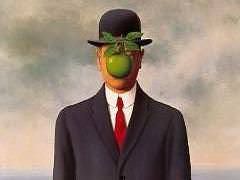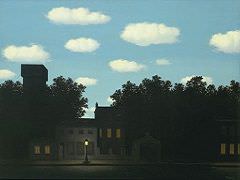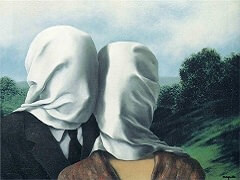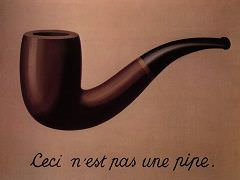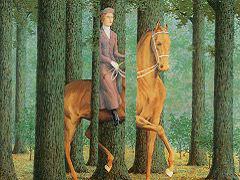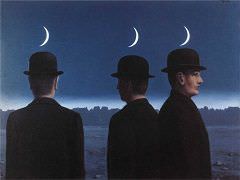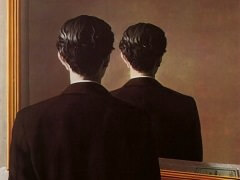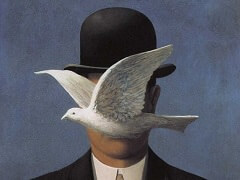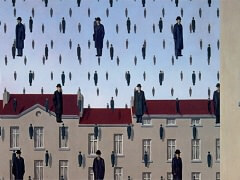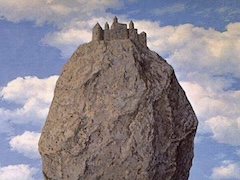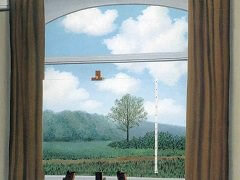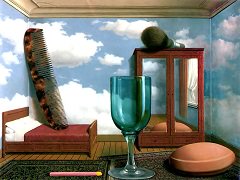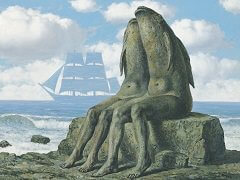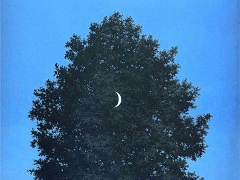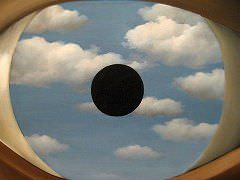The Fair Captive, 1947 by Rene Magritte
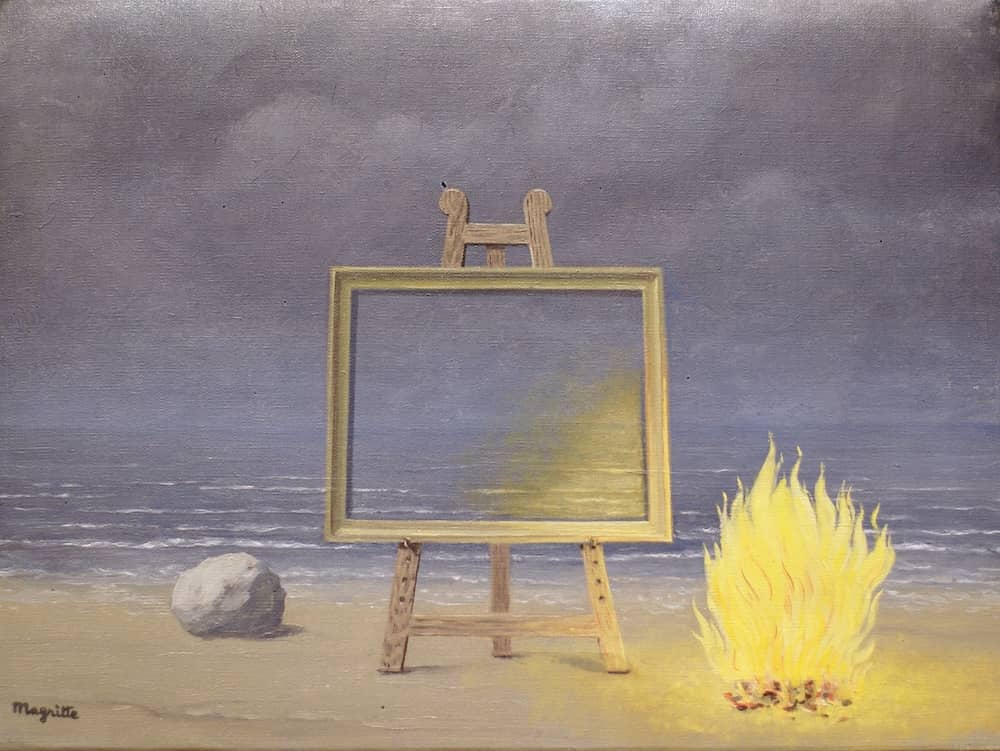
This painting is the third version of The Fair Captive, differing from those of 1931 and 1935 which situated the easel in a landscape setting. It preceded by two years the series of works known by the title The Human Condition. In both series Magritte investigated the paradoxical relationship between a painted image and what it conceals. Magritte might have learned the painting within a painting from illustrations in A. Cassagne's Traité pratique de perspective (1873), a book used at the Académie Royale des Beaux Arts when Magritte was a student there. It was a rich field for investigation, as suggested by the number of variations on the idea. He surely saw De Chiricho's 1917 version of a painting within a painting, Great Metaphysical Interior.
In this present work, the easel, flanked by a boulder and a flaming tuba, is moved to a beach. Since the flames of the burning tuba leave a reflection on the 'canvas', we are brought again to the notion of the canvas both as a pane of glass which allows the spectator to 'see through' reality, and as a metaphor for painting as a window on reality, as with Duchamp's Large Glass.

